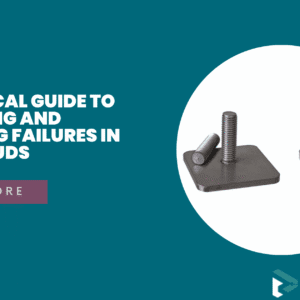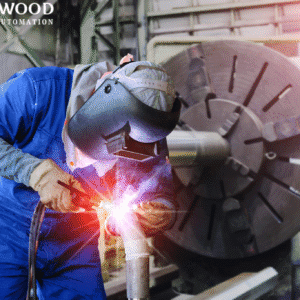Welding equipment is the bedrock of any fabrication shop. From welding machines and torches to shear studs, equipment maintenance is as important as the attention you give your finished product. Routine maintenance on your equipment not only helps prolong your machines’ life, but it also provides consistent operation, safety, and cost savings as well.
As a trusted Welding Equipment Supplier in UAE, we’ve worked closely with workshops across the region and have seen firsthand how a few simple habits can prevent costly breakdowns. In this blog, we’ll walk you through practical and actionable tips to keep your welding gear running smoothly for years to come.
1. Stick to a Regular Maintenance Schedule
Many workshop managers make the mistake of waiting until a problem arises before checking their equipment. Instead, simply make a maintenance checklist and have a schedule for inspections either weekly or monthly, depending on how much you use your machines.
All machines should be inspected routinely to check for minor wear and tear. This includes wear like fraying cables, loose connections, or clogged filters, before they turn into bigger problems, such as damaged cables or damaged machines etc.
2. Clean Your Equipment After Every Use
Dust, metal debris, and grease accumulate quickly in a welding environment. When these particles settle inside your equipment, they can block airflow, cause overheating, or damage internal components.
Along with your weekly or monthly inspections, another thing you can do is to brush the whole machine down (dust and debris), minus the electrical. You can use a dry cloth or compressed air to accomplish this. Don’t forget to wipe the torch nozzle, cables, and control panel down too. Some areas, of course, will need periodic deep cleaning, such as ripping off all the dust from the fan vents and checking if the airflow is good in terms of cooling.
3. Check Cables and Connections Regularly
Damaged cables are a common cause of welding malfunctions—and safety hazards. Inspect all cables for signs of wear, such as cuts, exposed wires, or burnt connectors. Replace them immediately if you see damage.
Also, every terminal connection must be tight and corrosion-free. Loose or oxidized connections can disrupt power flow, affect welding quality, and lead to dangerous arcing.
4. Store Equipment Properly
In the UAE, temperature and humidity can fluctuate greatly, especially in outdoor or semi-open workshops. Leaving your welding machines to the elements of dust or moisture will reduce their lifespan.
Always store your equipment in a clean, dry, and well-ventilated area. If you’re working with shear studs, keep them covered and protected from rusting or contamination.
Use protective covers and designate specific storage areas for torches, cables, consumables, and clamps to avoid tangling and unintentional damage.
5. Calibrate and Test Equipment Periodically
As a top Welding Equipment Supplier in UAE, we recommend periodic calibration of your welding machines to maintain accuracy and consistency, especially for automated or CNC-controlled units. Inaccurate settings can lead to poor weld quality and increased rework.
Testing also allows you to monitor performance metrics like voltage, amperage, and duty cycle—ensuring your equipment operates within safe limits.
6. Use Genuine Spare Parts and Accessories
One of the most overlooked factors in welding equipment maintenance is the quality of replacement parts. While cheaper, generic alternatives might seem like a good deal, they can cause long-term damage to your equipment.
Always use genuine spare parts and consumables recommended by your supplier. This includes everything from torch tips to regulators to shear studs. By working with a reputable Welding Equipment Supplier in UAE, you have assurance of quality parts that will fit and work appropriately, and equally important, are capable of long useful life.
7. Train Your Staff on Proper Usage
While you may be doing everything correctly in terms of maintenance, a machine can fail if it is not used correctly. If you can afford it, invest in training your staff on proper machine operation, safety, and basic troubleshooting.
Proper training reduces accidents, increases machine lifespan, and boosts overall productivity.
8. Monitor Ventilation and Cooling Systems
Overheating is a silent killer for welding equipment. Blocked vents or faulty fans can cause your machines to shut down unexpectedly or suffer internal damage.
Make certain that the cooling systems are operating properly and not blocked by anything. Cleaning the filters and fans regularly helps maintain internal temperature and prevents long-term wear.
Final Thoughts
Your welding equipment is a significant investment—and maintaining it should be part of your daily operations. By adopting these simple habits, you will minimize machine downtime, eliminate costly repairs, and prolong the useful life of your machines.
Whether you’re running a small workshop or managing a large-scale fabrication unit, partnering with a trusted Welding Equipment Supplier ensures you have access to reliable machines, spare parts, and expert advice when you need it.
Looking for high-quality welding gear or shear studs in UAE? Get in touch with Rockwood Machinery—your dependable partner in welding innovation and industrial excellence.
To learn more, click: How Can I Save Money with Automated Stud Welding Machines?




